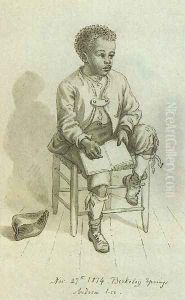David Hunter Strother Paintings
David Hunter Strother, born on September 26, 1816, in Martinsburg, Virginia (now West Virginia), was a distinguished American artist, illustrator, and writer, best known by his pseudonym, Porte Crayon. Strother's upbringing in the Shenandoah Valley, surrounded by the natural beauty and burgeoning cultural landscape of early 19th century America, deeply influenced his artistic and literary pursuits. He initially received education aimed at a career in law or business but was drawn irresistibly to the world of art. Strother went to Europe in 1838 to study art, spending significant time in Paris and Italy, where he honed his skills in drawing and painting.
Upon returning to the United States, Strother embarked on a career that would see him become one of the preeminent illustrators and writers of his time. He gained widespread recognition through his detailed sketches and essays published under his pseudonym in Harper's Monthly, capturing the essence of American life and landscapes with a keen eye and evocative prose. His work during the 1850s and 1860s, including his vivid depictions of Virginia and the broader Appalachian region, showcased his exceptional ability to intertwine illustration and narrative, bringing to life the characters and settings of antebellum America.
Strother's contributions were not confined to the arts. During the Civil War, he served the Union cause, leveraging his detailed knowledge of the Virginia terrain and his skills in topography. He rose to the rank of brigadier general by the war's end, his service marking a significant, albeit less well-known, aspect of his career. After the war, Strother continued to work as an illustrator and writer, also engaging in public service, including a stint as the U.S. consul to Mexico.
David Hunter Strother's legacy is that of a Renaissance man whose artistic and literary talents provided a window into the soul of 19th century America. His observations and illustrations serve as valuable historical documents, offering insight into the period's culture, landscapes, and societal norms. Strother died on March 8, 1888, in Charles Town, West Virginia, leaving behind a body of work that continues to be celebrated for its historical significance and artistic beauty.

